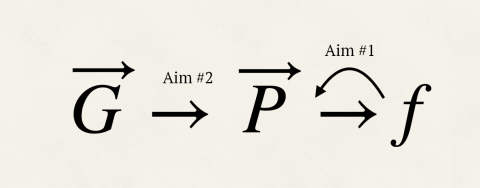Applying Fisher's Geometric Model to Cancer
I am currently a doctoral trainee in Dr. Christopher McFarland's lab. The focus of the McFarland lab is studying cancer evolution using wet and dry lab techniques, with the goal of improving cancer treatments. The development of treatment resistance is a significant obstacle to successful cancer treatment. Understanding how resistance evolves can allow us to predict and possibly one day control how cancer cells evolve, thus optimizing treatment.
My research focus is using Fisher's geometric model to create a fitness landscape of cancer. In this context, a fitness landscape shows the relationship between phenotype and fitness as a landscape. Phenotypes act similarly to latitude and longitude, giving an organism's location on the landscape based on its phenotypic makeup. Fitness tells us the elevation at each point on the landscape, with higher points corresponding to fitter organisms. Fisher's geometric model assumes a one-to-one relationship between genotype and phenotype, meaning that each gene corresponds to only a single phenotype. Therefore, when phenotype is used here, it refers to whether a gene is expressed and how strongly it is expressed. Although relatively simple, Fisher's geometric model can create a fitness landscape of cancer using existing data on cancer cell lines. Fisher's geometric model takes in three matrices, an ancestral phenotype matrix, a mutation matrix, and a covariance matrix; using these matrices, Fisher's geometric model returns a fitness value. To create a landscape, I will treat growth rate as a proxy for fitness and then apply optimization techniques to minimize the difference between the real fitness value and the one predicted by Fisher's geometric model. This method will give me the phenotype matrix and show the location of the cell on the landscape. Performing the process described above on existing single gene knockout data for multiple cancer cell lines will allow for the creation of a complete landscape.
The figure shown here is a graphical representation of my overarching research goal of developing a deeper understanding of the relationship between genotype (G), phenotype (P), and fitness (f ) in cancer. My project using Fisher’s geometric model can give insights into these relationships, particularly the relationship between phenotype and fitness (aim #1).


